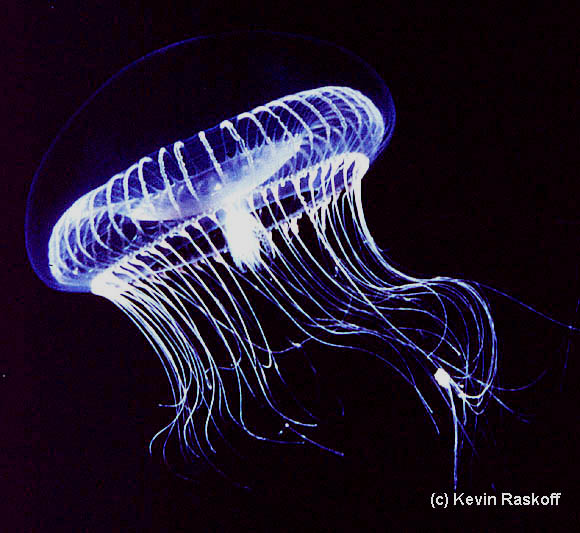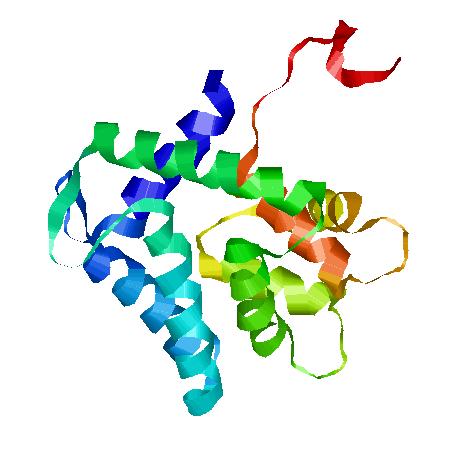Team:Valencia/proves4
From 2009.igem.org
(New page: {{Template:Valencia09iGEM5}} <div align="justify" style="position:relative; top:-5px; left:70px; width:700px"> <span style="color:black; align:justify; font-size:11pt; font-family: Verda...)
Newer edit →
Revision as of 10:39, 12 October 2009
A Short Story of Aequorin
This story have three parts, Discovery of Aequorin, The Town Dock and The Jellyfish Factory. This was written by Osamu Shimomura, who discovered Aequorin and last year won the Nobel Prize of Chemistry for the discover of the Green Fluorescent Protein. Read and enjoy!!
OSAMU SHIMOMURA
Marine Biological Laboratory, Woods Hole, Massachusetts 02543
Discovery of Aequorin
One day in the fall of 1960, shortly after my arrival at Princeton from Japan, Dr. Frank Johnson showed me a small jar containing a spoonful of white powder. He explained that the powder was a freeze dried “squeezate” made from the luminous jellyfish Aequorea, and that it would emit light when mixed with water. He asked me if I would be interested in studying the bioluminescence of this jellyfish. The powder did not emit any light when moistened. But I was quite impressed by Dr. Johnson’s description of the brilliant luminescence of live jellyfish and the great abundance of specimens around Friday Harbor, Washington. So my response was a definite “yes.” My experience in bioluminescence research at the time was meager and limited to only the luminescent system of the ostracod Cypridina. I imagined, vaguely, that the jellyfish would probably contain a kind of luciferin and a luciferase, possibly with one of the cofactors, such as ATP, FMN, or NADH, like the fireflies, luminous bacteria, and Cypridina that were known at that time.
In the early summer of 1961, we traveled from Princeton to Friday Harbor in Dr. Johnson’s station wagon, which he had newly purchased for the excursion. The car was fully loaded with necessary equipment and chemicals, including a MacNichol integrating photometer of gigantic size (a two-foot cube), and four travelers (my wife and Yo Saiga, an assistant, came along) with all of their baggage on the roof. It took us seven days to the West Coast, through Chicago and Glacier National Park. Dr. Johnson was the only driver throughout the trip, driving 12 hours a day with an admirable toughness.
Upon arrival at the Friday Harbor Laboratories, we were welcomed by Dr. Robert Fernald, Director of the Lab. We set up our work space in Lab 1, a small building consisting of two rooms, and we started to work. There were three other scientists in the room, and one of them Received 23 March 1995; accepted 5 June 1995. was Dr. Dixy Lee Ray, future governor of Washington State, who was always accompanied by a dog, her wellknown trademark. The laboratory area was a sanctuary prohibited to common dogs, but she declared that the animal was her assistant, not a dog.
The jellyfish were abundant. A constant stream of floating jellyfish passed along the side of the lab dock every morning and evening, riding with the current caused by the tide. We carefully scooped up the jellyfish into buckets, one by one, using a shallow dip-net. The specimens of Aequorea are shaped like hemispherical umbrellas and are nearly transparent. An average specimen measures 3- 4 inches in diameter and weighs about 50 g. The light organs-about 100 granules-are distributed evenly along the edge of the umbrella. Thus, the margin of the umbrella containing light organs could be easily cut off with a pair of scissors, yielding a thin strip called a “ring.” When the rings obtained from 20-30 jellyfish were squeezed through a rayon gauze, a liquid called “squeezate” was obtained. The squeezate was only dimly luminescent, but when it was diluted with water, the luminescence increased significantly for a period of 5- 10 minutes, as the granular light organs were cytolyzed.
We tried to extract luminescent substance from the squeezate by every thinkable method, but all failed; and we ran out of ideas after only a few days of work. Convinced that the cause of our failure was the luciferin-luciferase hypothesis that dominated our thinking, I suggested to Dr. Johnson that we should forget the idea of extracting luciferin and luciferase and, instead, try to isolate the luminescent substance whatever it might be. I was, however, unable to convince him. He did not agree with my idea, which had neither theoretical backing nor experimental support. Because of the disagreement on the experimental procedure, I started to work alone at one side of a table while, on the other side, Dr. Johnson and his assistant Yo Saiga continued their efforts to extract a luciferin by grinding luminous tissues with sand. It was an awkward situation.
The basic principle of isolating a bioluminescent substance is to extract it from the tissue under conditions that reversibly inhibit luminescence, or that cause a selective inactivation, consumption, or removal of a component necessary for light emission. In the case of a luciferin- luciferase system, for example, the luciferin is usually extracted with methanol, which stops luminescence by inactivating the luciferase. And the luciferase can be obtained from an aqueous extract after the luciferin has been exhausted by several minutes of spontaneous luminescence reactions. If a cofactor is involved in light emission, its removal or exhaustion can cause a reversible inhibition of luminescence, as in the case of the firefly bioluminescence system that requires ATP as the cofactor.
In the case of the jellyfish Aequowa, however, the presumed lack of luciferin and luciferase severely limited the range of techniques usable for the extraction of the lightemitting principle. I did believe that jellyfish luminescence requires molecular oxygen like all other known bioluminescence systems (later proved to be incorrect!), but we had no other information about the luminescence system or cofactor requirements. In an effort to find a way
to extract the luminescent principle, I tried to inhibit the luminescence of the squeezate by using the anaerobic
conditions that were created by vacuum or by the addition of reducing agents, but nothing worked. The results forced me to assume that the jellyfish system, like that of Cypridina, requires a very low oxygen tension-a level less than that attainable in my evacuated container. Furthermore, all of the known enzymatic cofactors, such as ATP, FMN, and DPNH, showed no effect on the luminescence when added. Finally, the only recourse was to try various chemicals available in the stockroom of the Lab, with the hope that one would reversibly inhibit the luminescence. This was clearly an approach that relied entirely on good luck, and I was not surprised when all of my efforts failed. I was conceptually exhausted, and could not come up with one further idea.
I spent the next several days soul-searching, trying to imagine the reaction that occurs in luminescing jellyfish and searching for a way to extract the luminescent principle. I often meditated on a drifting rowboat under the clear summer sky. Friday Harbor in summer, at that time, was quiet and peaceful, differing from the present-day scene that is almost saturated with busy pleasure boats and noisy seaplanes. A rowboat always has the right of way over one with a motor, so nobody disturbed my drifting vessel; even large ferries saved me a wide berth. Thus, meditation afloat was safe, but if I fell asleep and the boat was carried away by the tidal current, then I had to row for a long time to get back to the Lab.
One afternoon on the boat, a thought suddenly struck me-a thought so simple that I should have had it much sooner: “Even if a luciferin-luciferase system is not involved in the jellyfish luminescence, another enzyme or protein is very probably involved directly in the light-emitting reaction. If so, the activity of this enzyme or protein can probably be altered by a pH change, at least to some extent. Indeed, there might be a certain level of acidity at which an enzyme or protein could be reversibly inactivated.”
I immediately went back to the lab and made a squeezate. Then, I mixed a small portion of the squeezate with
acidified water containing various amounts of acetic acid. The resultant mixtures at pH 6.0 and pH 5.0 were clearly luminous, but at pH 4.0, I saw no luminescence. I filtered off the liquid from the rest of squeezate and mixed the solid part, containing the granules of light organs, with water of pH 4.0. After the mixture was filtered, the filtrate, now free of cells and debris, was nearly dark, but it regained its luminescence upon neutralization with a small amount of sodium bicarbonate. Indeed, the experiment showed that the luminescent substance of the jellyfish can
be extracted.
But my real surprise came in the next moment, when I added a small amount of seawater to the solution and saw that its light became explosively strong. The experiment showed that some component of seawater activates
the luminescence. Because the composition of seawater is known, I quickly discovered that the activator is Ca2+. The discovery of Ca2+ as the activator in turn suggested that EDTA should serve as a better inhibitor of luminescence than acidification during the extraction of the lightemitting principle. On the basis of these data, we devised a method of extracting the light-emitting principle.
With a workable procedure in hand for extracting the luminescent principle, our next task was to catch and process as many jellyfish as possible. We would collect jellyfish from 6 to 8 AM, then after a quick breakfast, we would cut rings from the jellyfish until noon. We devoted all afternoon to the extraction. After dinner, we again collected jellyfish from 6:30 to 8:30 PM, and the catch was kept in an aquarium to be processed next day together with the catch of the next morning. We soon found that the bottleneck of the operation was the step of cutting rings with scissors, which is a delicate and very slow process. Even after considerable practice, it took more than 1 minute to cut one jellyfish ring, and 3 hours of work by four persons could not produce more than 500 rings. To increase productivity, we hired several high school girls, trained them, and paid them 2 cents for each ring they cut. We also decided to buy jellyfish from the kids of scientists living on the campus, paying a penny for each jellyfish. This job provided dual benefits, the fun of catching jellyfish and of earning money. I remember a 6- or 7- year-old girl who grossed more than 10 dollars in 2 days (probably with parental help). Unfortunately, just when our operation was in full swing, the jellyfish suddenly vanished from the area. Thus, we extracted and processed only about 10,000 specimens of Aequorea that summer.
We returned to Princeton with the jellyfish extract packed in dry ice, and then began to purify the lightemitting principle from the extract by repeated chromatography on various kinds of large columns. It was a long process, and the utmost care was required to prevent the luminescence activity from being lost, which could be brought about by many causes. We completed the purification in early 1962, obtaining about 5 mg of the lightemitting principle. The substance was found to be a protein with a molecular weight about 20,000, and it emitted light when a trace of Ca2+ was added-whether in the presence or absence of oxygen, to our astonishment. We named the protein “aequorin” after the genus name of the jellyfish. Aequorin is an extraordinary protein containing a large amount of energy that can be released when calcium is added; thus it resembles a charged battery that releases the energy when short-circuited. The system was so unusual that some biochemistry professors expressed their skepticism. After 30 years of discovery, however, the importance of aequorin and its use as a calcium probe are firmly established in biochemistry and physiology. The word “aequorin” now can be found in various common dictionaries.
Discovery Of Aequorin | Go to The Town Dock
 "
"

